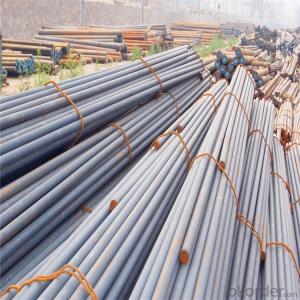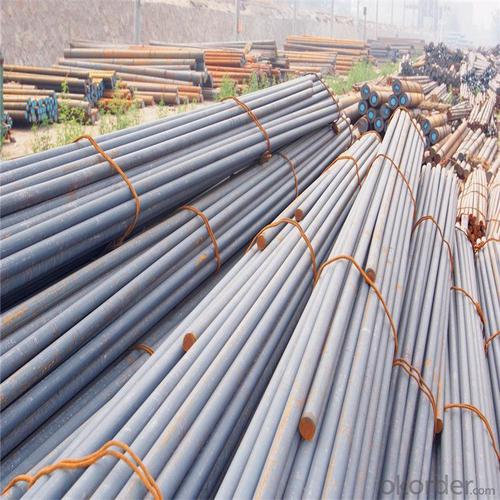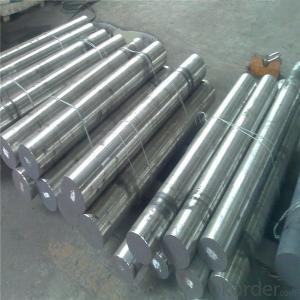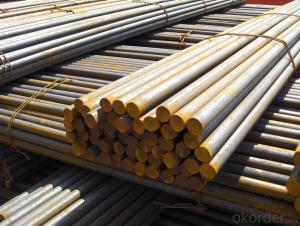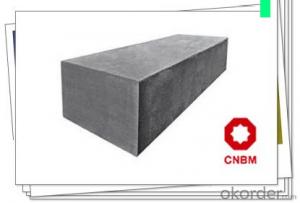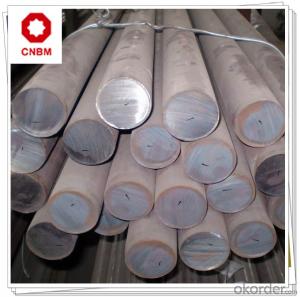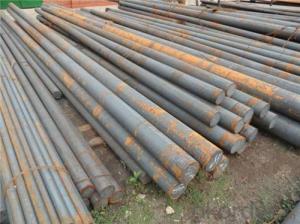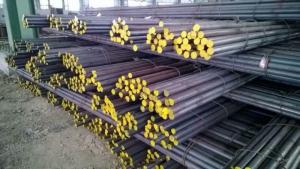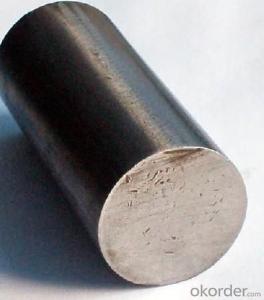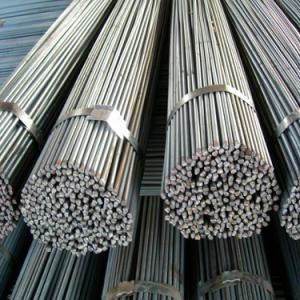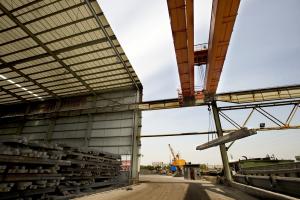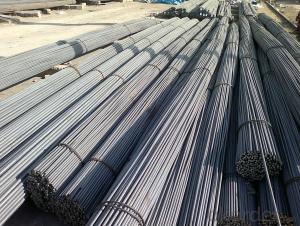Structural Steel Bar EN10025(93) S355J2G3
- Loading Port:
- Tianjin
- Payment Terms:
- TT OR LC
- Min Order Qty:
- 100 m.t.
- Supply Capability:
- 500000 m.t./month
OKorder Service Pledge
OKorder Financial Service
You Might Also Like
Specification
Structural Steel Bar EN10025(93) S355J2G3
Product Description of Structural Steel Bar EN10025(93) S355J2G3
1. Steel grade: ASTM4140, SCM440, 42CrMo, DIN1.7225
2. Length: 6M-12M
3. Diameter: 16mm-300mm
4. Product range: round bar, flat bar, square bar
5. Technique: Hot rolled, forged, cold drawn
Specification of Structural Steel Bar EN10025(93) S355J2G3
Material | SCM4140 | Round bar | Dia(mm) | 16-300mm |
Process | EAF + LF + VD + Forged + Heat Treatment (optional) | Length (mm) | Max 12m | |
Heat treatment | Normalized / Annealed / Quenched / tempered | Flat bar | Thickness(mm) | 8-500mm |
Delivery condition | Hot forged +Rough machined (black surface after Q/T)+ Turned (optional) | Width(mm) | 70-200mm | |
Test | Ultrasonic test according to SEP 1921-84 D/d | Length (mm) | Max 12m |
Chemical Composition of Structural Steel Bar EN10025(93) S355J2G3
C | Si | Mn | Cr | Mo | P | S |
0.38~0.43 | 0.15~0.35 | 0.75~1.00 | 0.8~1.1 | 0.15~0.25 | ≤0.035 | <0.04< td=""> |
Photo Show of Structural Steel Bar EN10025(93) S355J2G3
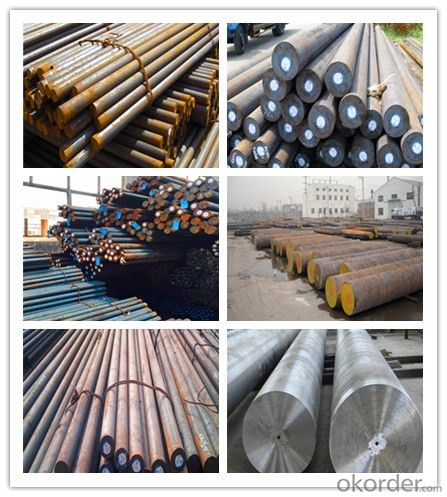
Packing and Delivery:
Packing in bundle package, or as customer's requirements.
Delivery Detail: 45 days after receiving the deposit.
Usage and Applications of Structural Steel Bar EN10025(93) S355J2G3
1. Steel round bar is used in a large number of architectural and engineering structures. Or it can be used in construction of plants for the production of steel house frames, high-voltage transmission towers, bridges, vehicles, boilers, containers, ships, etc.
2. And we can use this kind of product on the performance of the mechanical parts if the demand is not very high.
3. Some special material steel round bar can be used for main shaft of steamer, hummer shank, with big section and supper force.
Company Information
CNBM International Corporation is the most important trading platform of CNBM group.
Whith its advantages, CNBM International are mainly concentrate on Cement, Glass, Iron and Steel, Ceramics industries and devotes herself for supplying high qulity series of refractories as well as technical consultancies and logistics solutions.

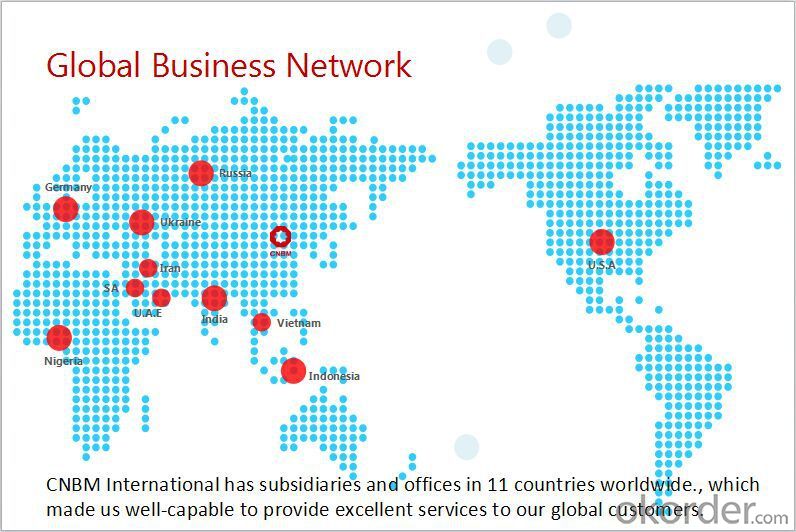
F A Q
1, Your advantages?
professional products inquiry, products knowledge train (for agents), smooth goods delivery, excellent customer solution proposale
2, Test & Certificate?
SGS test is available, customer inspection before shipping is welcome, third party inspection is no problem
3, Factory or Trading Company?
CNBM is a trading company but we have so many protocol factories and CNBM works as a trading department of these factories. Also CNBM is the holding company of many factories.
4, Payment Terms?
30% TT as deposit and 70% before delivery.
Irrevocable L/C at sight.
5, Trading Terms?
EXW, FOB, CIF, FFR, CNF
6, After-sale Service?
CNBM provides the services and support you need for every step of our cooperation. We're the business partner you can trust.
For any problem, please kindly contact us at any your convenient time.
We'll reply you in our first priority within 24 hours.
- Q: What are the different welding techniques for steel round bars?
- Steel round bars can be welded using various techniques. Here are some commonly used ones: 1. Stick welding, also known as Shielded Metal Arc Welding (SMAW): This technique involves using an electrode coated in flux to create an electric arc between the electrode and the workpiece. The base metal melts, resulting in a weld. 2. Gas Metal Arc Welding (GMAW), commonly referred to as MIG (Metal Inert Gas) welding: In this technique, a wire electrode is fed through a welding gun. It combines with a shielding gas to create a weld. 3. Flux-Cored Arc Welding (FCAW): Similar to GMAW, FCAW uses a continuously fed electrode. However, instead of a solid wire electrode, it uses a tubular electrode filled with flux. This flux protects the weld and adds strength. 4. Tungsten Inert Gas (TIG) welding, also known as Gas Tungsten Arc Welding (GTAW): This precise technique involves using a non-consumable tungsten electrode to create an arc. Additional material may be added using a filler rod. 5. Submerged Arc Welding (SAW): This technique is suitable for heavy-duty applications, such as welding steel round bars for structural purposes. The arc and welding zone are submerged in granular flux, providing protection and deep penetration. Each technique has its advantages and is suitable for specific applications. Factors like round bar thickness, required weld strength, and accessibility of the welding site should be considered when selecting the appropriate technique for a strong and durable weld on steel round bars.
- Q: Can steel round bars be threaded or machined?
- Yes, steel round bars can be threaded or machined. Threading refers to the process of creating internal or external threads on the surface of a steel round bar, allowing it to be connected or fastened to other components. Machining, on the other hand, involves using various cutting tools and techniques to remove material from the steel round bar, shaping it into a desired form or size. Both threading and machining can be performed on steel round bars to meet specific requirements and applications, such as creating threaded rods, bolts, or custom-designed components.
- Q: Can steel round bars be used for making pressure vessels?
- Typically, steel round bars are not employed in the production of pressure vessels due to their lack of specific properties, including high strength, good weldability, and resistance to corrosion. Although steel round bars offer strength, they may not meet all the essential criteria. Instead, pressure vessels are manufactured using specialized materials like carbon steel plates or stainless steel sheets, which satisfy the necessary standards and certifications. These materials are specifically selected for their capacity to endure the high pressures and temperatures experienced by pressure vessels.
- Q: What are the different types of steel round bars used in the automotive steering systems?
- There are several types of steel round bars used in automotive steering systems, including carbon steel, alloy steel, and stainless steel. Carbon steel round bars are commonly used due to their affordability and high strength properties. Alloy steel round bars are used when higher strength and durability are required, as they have additional alloying elements such as chromium, nickel, and molybdenum. Stainless steel round bars are preferred for their corrosion resistance properties, making them suitable for steering components exposed to harsh environments or moisture.
- Q: Are steel round bars suitable for high-stress applications?
- Yes, steel round bars are suitable for high-stress applications. Steel is known for its strength and durability, making it an ideal material for high-stress environments. Round bars, in particular, offer excellent tensile strength and can withstand heavy loads and intense pressure. They are commonly used in industries such as construction, manufacturing, and engineering, where high-stress applications require a reliable and robust material. The round shape of the bars also provides uniformity in strength, ensuring consistent performance under extreme conditions. Additionally, steel round bars can be heat-treated to further enhance their mechanical properties, making them even more suitable for high-stress applications. Overall, steel round bars are a reliable and effective choice for demanding environments that require exceptional strength and resilience.
- Q: Can steel round bars be used in the renewable energy industry?
- Indeed, in the renewable energy industry, steel round bars find utility. Their versatility and durability render them fitting for diverse applications within renewable energy projects. As an illustration, they serve as support structures for solar panels, wind turbine towers, and hydroelectric power plants. The steel round bars furnish the requisite strength and stability to endure the adverse environmental conditions frequently encountered in renewable energy projects. Moreover, steel is a material highly amenable to recycling, thereby aligning with the sustainable principles upheld by the renewable energy industry. Consequently, steel round bars represent a feasible and frequently employed constituent in the construction and advancement of renewable energy infrastructure.
- Q: Can steel round bars be used for fastener applications?
- Yes, steel round bars can be used for fastener applications. Steel round bars are often used as bolts, screws, and studs in various industries due to their high strength, durability, and resistance to corrosion. They provide a secure and reliable fastening solution for a wide range of applications, including construction, automotive, and machinery.
- Q: Can steel round bars be used in the hydraulic industry?
- Certainly, the hydraulic industry can make use of steel round bars. Renowned for their robustness, endurance, and immunity to corrosion, steel round bars prove to be ideal for a wide range of applications within the hydraulic industry. They find utility in the production of hydraulic cylinders, pistons, and other components necessitating exceptional tensile strength and dependability. Moreover, steel round bars can be conveniently machined and fashioned into diverse dimensions and specifications, ensuring they align with the precise requirements of hydraulic systems. In essence, owing to their exceptional mechanical characteristics and adaptability, steel round bars remain a favored choice in the hydraulic industry.
- Q: Can steel round bars be used for making valves or fittings?
- Yes, steel round bars can be used for making valves or fittings. Steel round bars offer excellent strength, durability, and corrosion resistance, making them suitable for various applications in the manufacturing of valves and fittings. They can be easily machined, welded, and fabricated to meet specific design requirements, ensuring reliable and long-lasting performance in valve and fitting systems.
- Q: What are the different bending methods for steel round bars?
- Different bending methods can be used for steel round bars, depending on the desired outcome and specific application. Some of the commonly employed methods for bending steel round bars include: 1. Cold Bending: Steel round bars are bent at room temperature without the application of heat. Specialized bending machines or tools are used to exert force on the bar and achieve the desired shape. 2. Heat Bending: The steel round bar is heated to a specific temperature to increase its malleability, making it easier to bend. Specialized tools or fixtures are then used to bend the heated bar. Heat bending is ideal for intricate or precise bends that cannot be achieved through cold bending alone. 3. Induction Bending: This process involves using an induction coil to locally heat the steel round bar, enabling gradual and smooth bending. Induction bending is commonly used for large diameter or thick-walled round bars, providing better control over the bending process and minimizing distortion or damage to the material. 4. Roll Bending: Steel round bars are passed between a set of rollers that gradually bend them into the desired shape. Roll bending is often employed for larger diameter or longer round bars, as the continuous support from the rollers ensures consistent bending along the entire length of the bar. 5. Mandrel Bending: Mandrel bending involves inserting a rod, known as a mandrel, inside the steel round bar to support the inner walls during the bending process. This technique helps the bar maintain its shape and prevents the formation of wrinkles or deformations on the inside of the bend. Each bending method has its own advantages and limitations. The choice of method depends on factors such as the size and thickness of the round bar, the required bend radius, and the desired quality of the final product. Consulting with experts or professionals in the field is crucial to determine the most suitable bending method for a specific steel round bar application.
Send your message to us
Structural Steel Bar EN10025(93) S355J2G3
- Loading Port:
- Tianjin
- Payment Terms:
- TT OR LC
- Min Order Qty:
- 100 m.t.
- Supply Capability:
- 500000 m.t./month
OKorder Service Pledge
OKorder Financial Service
Similar products
Hot products
Hot Searches
Related keywords
